Daraa Attractions : Located in the far south of Syria, Daraa Governorate offers a unique blend of ancient civilizations, religious legacies, and architectural marvels. Among the most fascinating Daraa Attractions are its Roman theaters, Byzantine churches, and early Islamic sites that reflect centuries of cultural fusion. Often overlooked by mainstream tourism, Daraa Attractions reveal the region’s hidden stories through towns like Izraa, al-Sanamein, Jamrein, and Tel Shahab—each rich in archaeological and spiritual value. For history lovers, exploring Daraa Attractions means walking through layers of time, from Roman ruins to Ottoman architecture, in one of Syria’s most historically significant regions.
Sights Southern Syria | Daraa Attractions
01- Izraa (إزرع)
Ancient Churches of Izraa
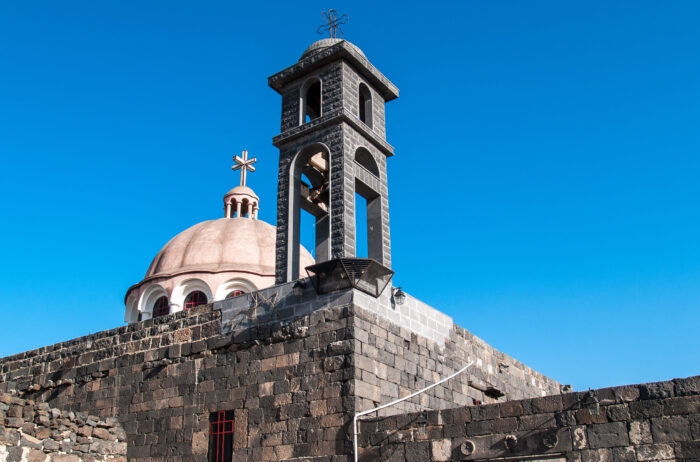
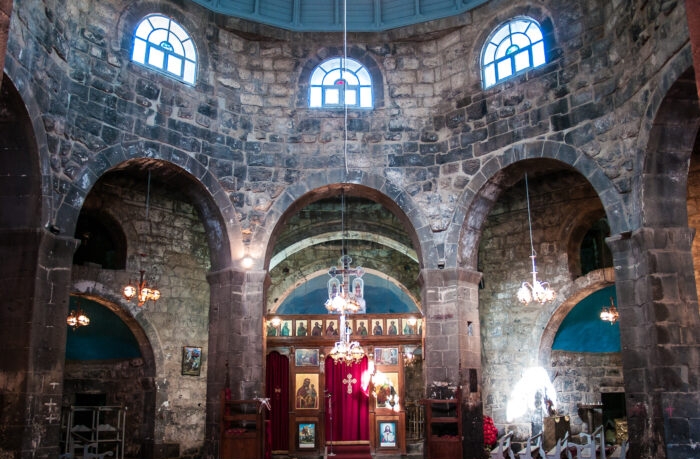
Izraa is one of the most historically rich towns in southern Syria, especially famed for its early Christian churches dating back to the 5th and 6th centuries. The most notable among them is the Church of Saint George (Mar Girgis), a beautifully preserved Byzantine structure believed to have been built in 515 AD. This church remains an architectural wonder with its basalt stone construction, arches, and carvings that reflect both Christian symbolism and local craft.
The church is still a place of pilgrimage for many Syrian Christians and is often compared in importance to churches in Bosra and Shaqqa. Visitors will find remnants of original columns, altar bases, and possibly even faint Byzantine iconography.
Roman and Islamic Legacy
In addition to Christian heritage, Izraa was a Roman military outpost and later a town of strategic importance during the early Islamic period. Traces of Roman roads and fortifications still linger, though many are buried beneath modern structures.
02- al-Sanamein (الصنمين)
Twin Temples of al-Sanamein
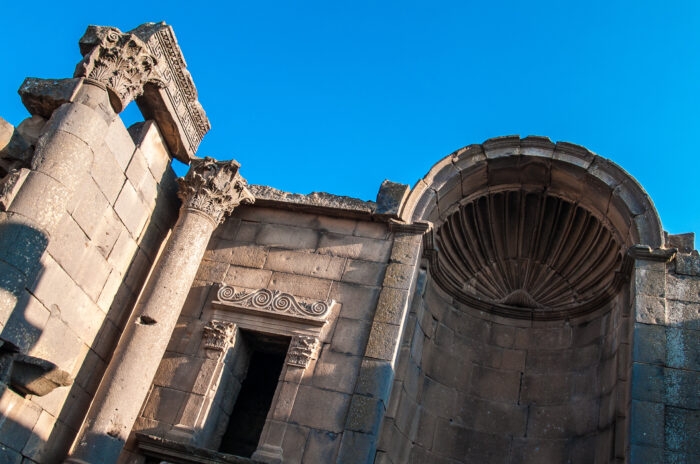
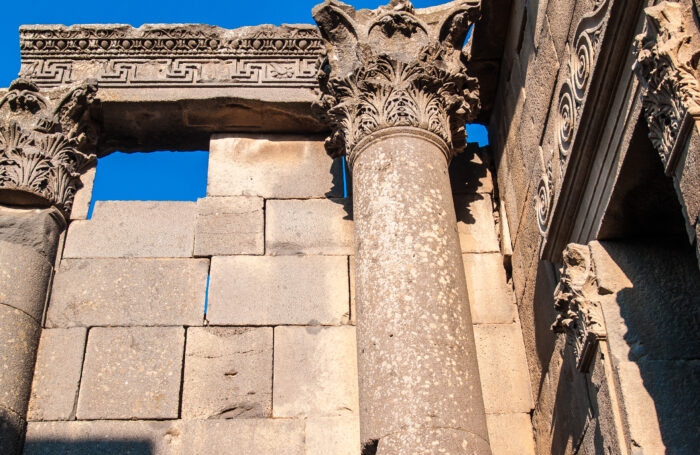
The town’s name literally means “The Two Idols” or “The Two Statues,” referring to the twin Roman temples that once stood here. These ancient sanctuaries are thought to have been built during the 2nd century AD and were later converted into churches in the Byzantine period, then mosques during the Islamic expansion. This layered transformation makes al-Sanamein an important symbol of Syria’s religious and architectural evolution.
Although not fully excavated, large basalt blocks and carved stones are still visible. The site offers a unique chance to reflect on how religious spaces were reused and adapted over centuries.
Historic Mosque
An old mosque, believed to be built on top of a Byzantine structure, still stands and is used today. It contains fragments of ancient columns and repurposed Roman stones, illustrating how Islamic builders integrated earlier materials into their architecture.
03- Jamrein جمرين
Byzantine and Roman Vestiges
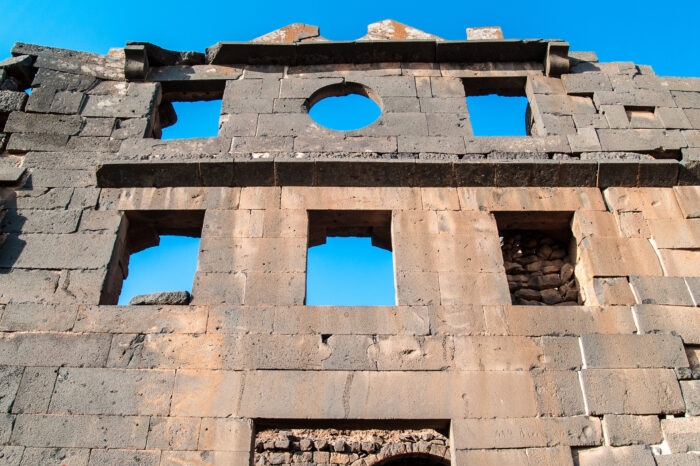
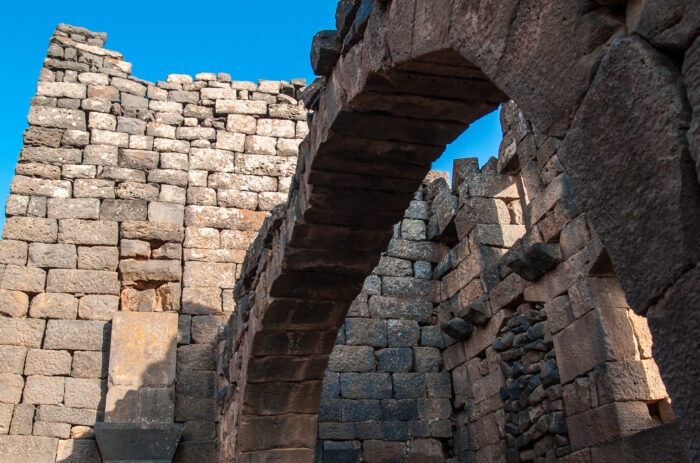
Jamrein is a smaller village but historically significant. It hosts ruins believed to belong to a Byzantine monastery or early Christian church, including a rectangular structure with thick basalt walls and carved doorways. The lack of complete excavation means that much of its historical treasures lie hidden.
Local oral history also speaks of ancient Christian cemeteries and stone crosses once visible on private homes. The area is ideal for travelers interested in off-the-beaten-path ruins where history remains largely untouched by modern restoration.
04- Tel Shahab (تل شهاب)
Roman Bridge and Waterfalls

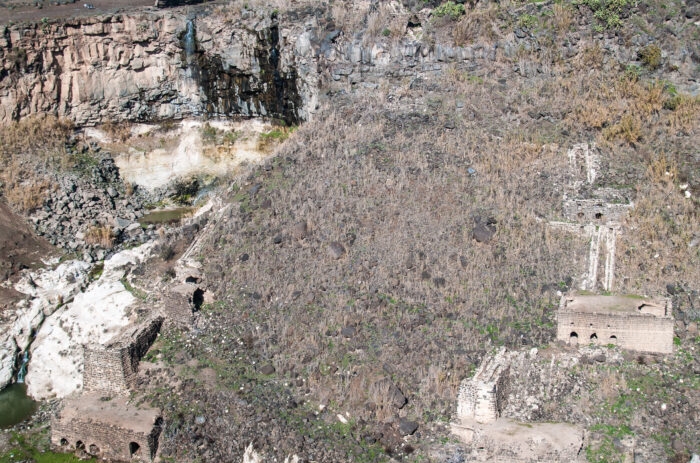
Perhaps the most scenic site in Daraa’s countryside, Tel Shahab is famed for its ancient Roman bridge, which crosses the Tel Shahab waterfall. The bridge is remarkably preserved, showcasing Roman engineering skill with its wide stone arches and robust basalt construction.
The natural beauty of the waterfall, combined with the historic ambiance of the bridge, makes this one of the most photogenic spots in southern Syria. It is a popular local picnic area and a place for casual hiking, offering visitors a peaceful escape with a historical backdrop.
Ottoman-Era Mill
Nearby are the ruins of an Ottoman-era grain mill, which utilized the waterfall’s flow to power its wheels. This adds another layer of historical depth to Tel Shahab, showing how the site has been continuously used and adapted over centuries.
05- Muzayrib Other Worthy Mentions in Daraa
Muzayrib

An old town west of Daraa, Muzayrib holds the ruins of an Ottoman castle and khan (caravanserai), once used as a stop for pilgrims heading to Mecca. Its natural springs and ancient market layout are still visible today.
Why Visit These Sights?
The towns of Izraa, al-Sanamein, Jamrein, and Tel Shahab may not be on the main tourist trail, but they hold exceptional value for history lovers, religious travelers, and photographers. These places showcase the fusion of Roman, Byzantine, and Islamic cultures in southern Syria, all set within charming rural landscapes.
While Bosra remains the flagship site of Daraa, these lesser-known towns offer a more authentic and intimate experience, with fewer crowds and more opportunities for personal discovery. From early churches to Roman engineering marvels and picturesque waterfalls, Daraa’s hidden sights are well worth the visit for any cultural traveler.
A Final Note: Don’t Miss Bosra
While towns like Izraa, al-Sanamein, Jamrein, and Tel Shahab offer fascinating historical sites and a unique glimpse into the region’s rich heritage, Daraa Attractions truly shine here. Among these Daraa Attractions, Bosra stands apart as a destination worthy of its own dedicated visit. Famous worldwide for its remarkably well-preserved Roman theater and extensive ancient ruins, Bosra provides an immersive experience unlike any other in Daraa Attractions. For travelers exploring southern Syria’s cultural treasures, Bosra remains the crown jewel and a must-see highlight that complements the quieter, hidden gems found throughout the governorate’s Daraa Attractions.
Finally.. If you have any questions, please contact us. To explore further, visit our Facebook Syria collection for rare images and cultural highlights.
Sources & References:
UNESCO – World Heritage Centre: https://whc.unesco.org
Archnet – Architecture & Heritage Database: https://www.archnet.org
World History Encyclopedia: https://www.worldhistory.org
Syrian Heritage Archive Project: https://syrian-heritage.org
Global Encyclopedia: Wikipedia



